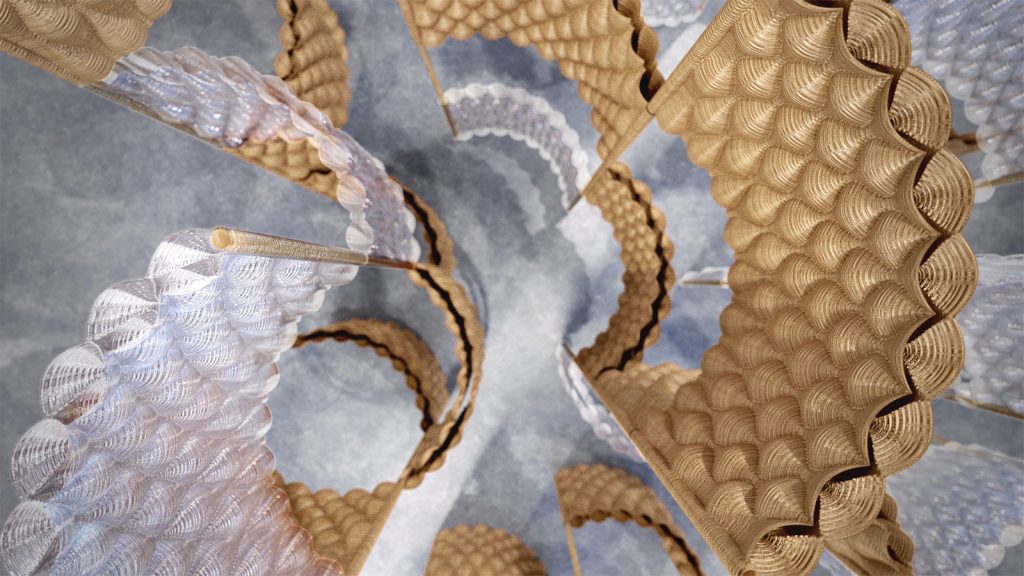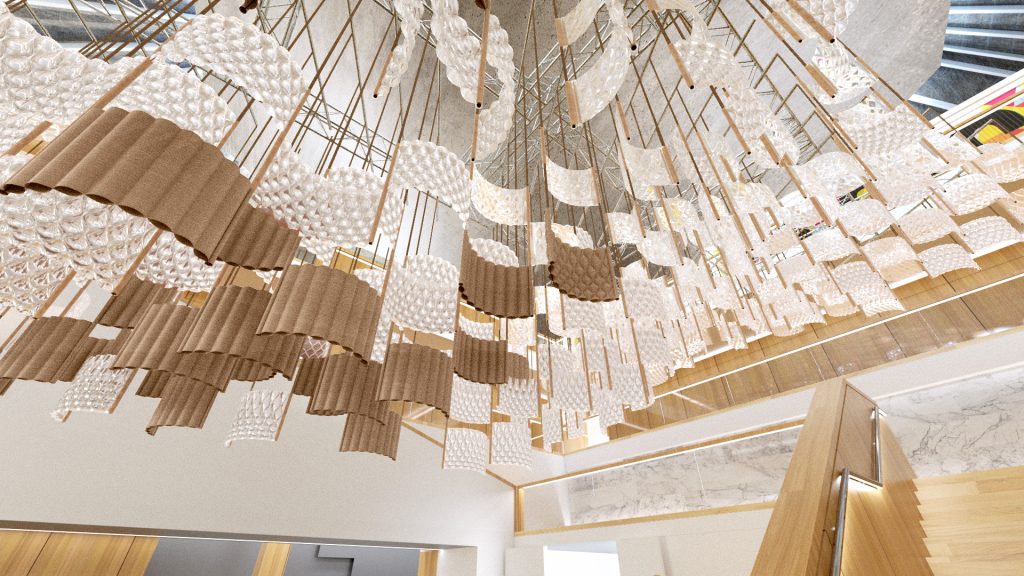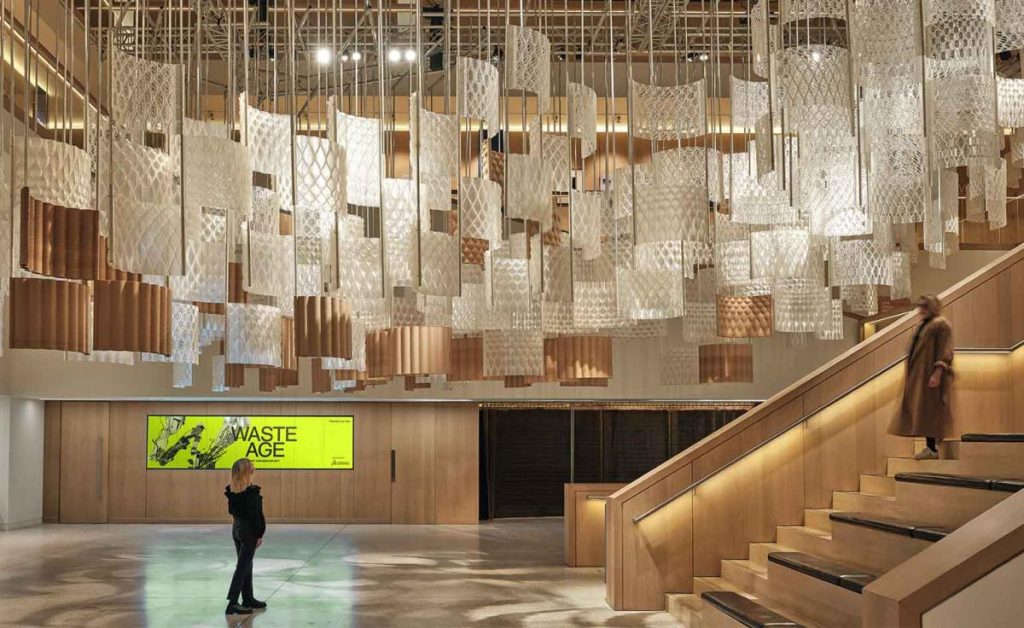
Aurora a sustainable installation by Arthur Mamou-Mani and Dassault Systèmes at the Design Museum in London
Dassault Systèmes announced the next installation in its “Design for Life” program of collaborations with groundbreaking designers around the world, Aurora by Arthur Mamou-Mani and Dassault Systèmes.
Aurora is an interactive manifestation of the power of uniting design, science and industry to collaboratively imagine and create sustainable innovations that harmonize product, nature and life. Aurora will be showcased in London during the opening weeks of the Design Museum’s Waste Age exhibition from October 23, 2021 to coincide with the 26th United Nations Climate Change Conference of the Parties in Glasgow.

This most recent “Design for Life” collaboration was initiated two years ago as an experimental research project into the use of upstream thinking – a design approach and process that makes regeneration a requirement of every project – and Dassault Systèmes software, to demonstrate the principles of circular innovation. Aurora is the culmination of that research: an experiential installation made of modules that can be crushed, melted and reformed, in a continuous process of reinvention and rebirth.
“Aurora celebrates a new dawn in the wake of the worldwide trauma of the global pandemic,” said Arthur Mamou-Mani, Architect. “As designers, architects and engineers, we can now come together to create shared experiences, rather than fixed projects, empowering people with the means of both production and creativity.
From material selection to design and fabrication, Aurora signals the end of the take-make-waste era and the dawn of built environments conceived for regeneration with an inclusive approach that weaves together knowledge and know how from multiple disciplines. Following a molecular-level analysis of different materials, bioplastic Polylactic Acid (PLA) – a non-toxic thermoplastic derived from plants, which can be 3D-printed, assembled, recycled and printed again in a continuous, closed loop until it can be composted back to Earth. The team used Dassault Systèmes’ 3DEXPERIENCE platform on the cloud to collaborate and create a virtual twin experience of its artwork in a virtual space that precisely replicates the Design Museum’s atrium in London.

“The intent for this collaboration was to realize the installation through a process that was holistic, integrative and exploratory,” said Anne Asensio, Vice President Design Experience, Dassault Systèmes. “By questioning every aspect of its production and lifecycle, from a detailed assessment of the environmental impact of the material through to the possibilities for disassembly and reuse, we wanted to bring the audience along a journey that questions how we may design and create habitats in the future.”
This means replacing top-down, data-driven city planning with new urban narratives and allowing citizens to contribute to more sustainable cities. With high-impact photorealistic visuals, the team experienced the installation’s appearance in this virtual space at different times of day, as light, shadows and airflows change the environment.
It was able to imagine, experiment, design, optimize, test, visualize and refine its creations virtually and in parallel before consuming any physical materials, and evaluate the sustainability of every choice. This ensured that it achieved the project’s objectives and delivered an optimized experience that demonstrates a world in which every “made” object – from home and lifestyle to mobility and cities – is imagined, invented and manufactured for sustainability.

In this “decade to deliver” a 50% reduction in global CO2 emissions, experts in design and science must converge and collaborate to envision a new, unified practice for sustainable models to support a planet having limited resources. The 3DEXPERIENCE platform allows them to collaborate and use technologies including virtual reality, 3D modelling, simulations and generative design in a virtual universe that unifies their disciplines, facilitates understanding through the universal language of 3D, and eases the complexity of sustainability decision-making, from the molecular level to manufacture and end-of-life reuse/recovery/recycling, for more ethical and more sustainable design.
Initiated a decade ago, “Design for Life” is an ongoing program to explore how science and technology can empower designers to build a better, more sustainable world. Previous collaborations have included Kengo Kuma, Thom Mayne and Patrick Jouin.

